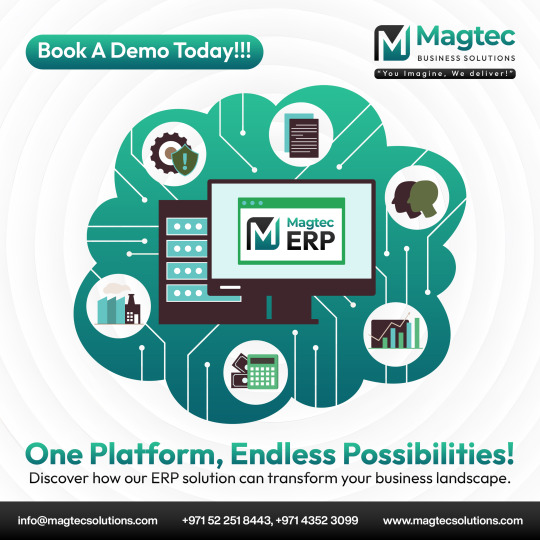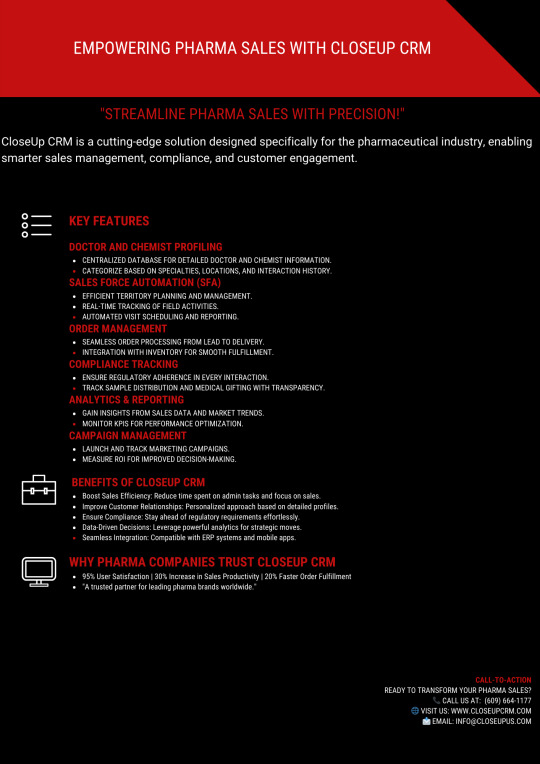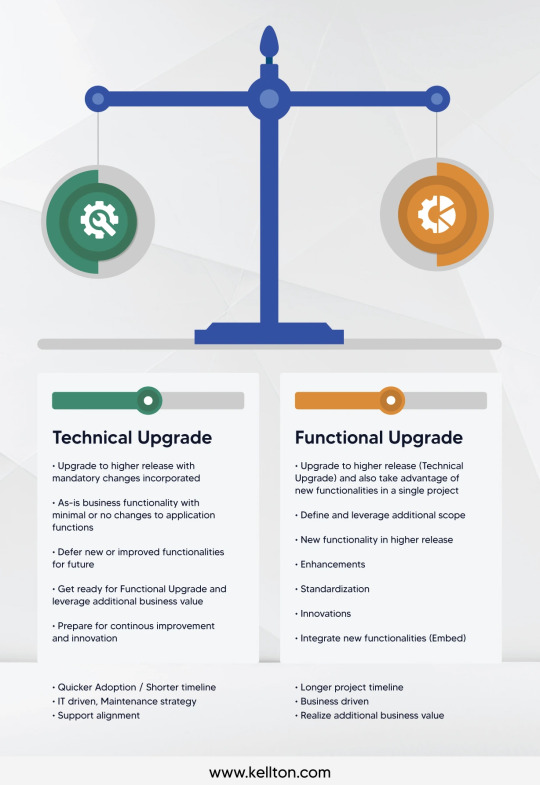#customer data management software
Explore tagged Tumblr posts
Text

Transform your business with Magtec ERP! 🌐✨ Discover endless possibilities on a single platform. Book a demo today and see how we can elevate your operations to the next level! 🚀📈
#magtec#magtecerp#magtecsolutions#erp#businesssolutions#digitaltransformation#innovation#technology#growth#efficiency#productivity#cloud#automation#management#software#enterprise#success#analytics#customization#scalability#integration#teamwork#collaboration#strategy#data#support#consulting#businessdevelopment#transformation#leadership
2 notes
·
View notes
Text
Download HVAC-Cx: The Essential Building HVAC Systems Commissioning Tool
As building systems become increasingly complex, the need for efficient commissioning and monitoring tools has never been more critical. HVAC-Cx, developed by the National Institute of Standards and Technology (NIST), stands out as a powerful semi-automated commissioning software tool that’s transforming how we analyze and optimize HVAC performance in commercial buildings. Having worked…
#air handling units#APAR rules#BACnet#building automation#building energy management#custom rules#damper control#data analysis#diagnostic assistance#Energy efficiency#equipment monitoring#fault detection#functional performance testing#HVAC commissioning#HVAC-Cx v2.2#NIST software#operational modes#preventive maintenance#temperature sensors
0 notes
Text

CloseUp CRM is a cutting-edge solution designed specifically for the pharmaceutical industry, enabling smarter sales management, compliance, and customer engagement.
🌐 Visit us: www.closeupcrm.com
#pharma crm#Data Analytics#Automated Solutions#Pharma Software#Healthcare CRM#Customer Relationship Management#Sales Optimization#Prescription Management
0 notes
Text
Breaking Down Silos and Achieving Synergy with CCM

In a business that is driven by information, efficiency in using it to produce customer communications stands as a pivotal factor in success. Unfortunately, the continued challenges of siloed data, disconnected workflows and inconsistent communication channels often hamper this process. Here is where customer communication management (CCM) software provides a powerful solution for dismantling these silos and fostering seamless document generation synergy.
The document generation process without a modern CCM platform can face multiple obstacles, including scattered data sources across departments, manual document creation, siloed approval processes, inconsistent branding and messaging and limited data-driven insights for personalization. The ideal process aims to remedy these issues by establishing a unified data platform that makes it possible to reduce errors, improve efficiency and ensure documents are tailored to individual preferences and needs.
Customer communications created in a siloed environment not only require excess time to produce, but they are also error-prone, and they lead to inconsistent communications that hinder brand recognition. Useful customer insights from personalized communication are impeded by disconnected data sources. Operational inefficiencies are also a concern, as redundant tasks and fragmented workflows increase costs and thwart organizational effectiveness.
To overcome these challenges, organizations must adopt integrated and streamlined document generation processes. By breaking down silos, organizations can improve efficiency, communication consistency and agility in market response, as well as harness customer insights and achieve greater operational efficiency.
10 strategies for breaking down silos with CCM:
Unified data platform: Implement a unified data platform to centralize relevant information, eliminating silos created by disparate data sources.
Integrated CCM system: Invest in an integrated CCM system that connects seamlessly with various departments to unify document creation, approval processes and communication strategies.
Automated workflows: Implement automated workflows to streamline document generation processes, reduce manual interventions and accelerate workflows.
Real-time collaboration tools: Incorporate real-time tools for departments to work collaboratively, enhancing transparency and reducing delays.
Centralized templates and branding guidelines: Establish centralized templates and branding guidelines to promote consistency in branding and messaging.
Transparent approval chains: Implement transparent approval chains for stakeholders from different departments to track document approvals, reducing confusion.
Cross-functional training: Provide cross-functional training on using the CCM system, ensuring a collaborative and unified approach across departments.
Shared goals and objectives: Establish shared goals and objectives spanning departments to encourage collaboration, breaking down silos arising from narrow department-specific focus.
Regular communication and feedback loops: Encourage regular communication and feedback loops between departments to identify challenges, share insights and continuously improve processes within the CCM framework.
Data-driven insights for personalization: Leverage the CCM system to gather data-driven insights for personalization, tailoring communications effectively to foster a customer-centric approach.
Benefits of an ideal document creation process:
Enhanced efficiency: Automated workflows and centralized data streamline processes, reducing turnaround times.
Improved customer experience: Consistent and personalized communication strengthens customer relationships, boosting satisfaction.
Reduced costs: Eliminating redundancy and silos in document generation leads to significant cost savings.
Data-driven decision-making: Real-time insights into customer behavior enable informed business decisions.
Increased agility: Streamlined processes allow for rapid adaptation to market changes and customer needs.
By embracing a CCM solution and its silo-busting capabilities, organizations can transform their customer communication processes from a headache to a symphony of streamlined efficiency and customer-centric communication. The benefits are clear: reduced costs, increased agility and the ability to forge deeper connections with your customers through consistent, personalized and impactful communications.
https://www.belwo.com/blogs/breaking-down-silos-and-achieving-synergy-with-ccm
#Silos and AchievingSynergy#CCM#customer communications#siloed data#communication channels#customer communication management#CCM software#CCM platform#silos with CCM#CCM system#CCM framework#siloed environment
0 notes
Text
Unlocking Potential: Best Practices in Data Analytics Management
Use data analytics management best practices to unleash your company's full potential. Use strong tools to collect, examine, and present data to produce insights that can be put to use. Use tactics that support your objectives to improve decision-making, streamline processes, and spur growth. Utilize expert-driven management to turn data into a competitive advantage. Visit us now to know more about Data Analytics Management.
#customer relationship management#erp software#fusion5#corporate performance management#cpm tools#crm systems#ibm cloud#netsuite#enterprise architecture#erp sytems in au#data analytics Management
0 notes
Text
POS Implementation
POS Implementation: A Comprehensive Guide
In today’s fast-paced retail and service environments, implementing a Point of Sale (POS) system can significantly streamline operations, enhance customer experience, and improve overall efficiency. Whether you’re upgrading from a traditional cash register or installing your first POS system, proper implementation is crucial to maximizing its benefits. This guide will walk you through the essential steps of POS implementation.
Step 1: Identify Business Needs
Before selecting a POS system, assessing your business requirements is important. Consider the following:
The size and type of your business.
Specific features you need (e.g., inventory tracking, customer loyalty programs).
Budget constraints.
Integration requirements with existing software and hardware.
Step 2: Choose the Right POS System
Not all POS systems are created equal. Here’s how to select one that fits your needs:
Research and compare various providers.
Look for scalability to accommodate future growth.
Ensure it supports multiple payment methods.
Check reviews and testimonials from similar businesses.
Step 3: Hardware and Software Setup
A POS system consists of hardware (like barcode scanners, receipt printers, and card readers) and software. Ensure you:
Acquire hardware compatible with your chosen POS software.
Install and configure the software according to your operational needs.
Test all components to ensure they work seamlessly together.
Step 4: Data Migration
If you’re transitioning from an older system, data migration is a critical step:
Back up your existing data.
Transfer inventory, sales history, and customer information to the new system.
Verify the accuracy of migrated data.
Step 5: Employee Training
Proper training ensures your team can effectively use the POS system:
Organize hands-on training sessions.
Provide user manuals and support materials.
Address common troubleshooting scenarios.
Step 6: Pilot Testing
Before full-scale implementation, conduct a pilot test:
Use the system in a controlled environment.
Monitor for any issues or inefficiencies.
Gather feedback from staff and customers.
Step 7: Go Live
Once testing is complete, it’s time to roll out the system:
Schedule the launch during a low-traffic period to minimize disruptions.
Ensure on-site support is available for the initial days.
Communicate the change to your team and customers.
Step 8: Monitor and Optimize
Implementation doesn’t end with the launch. Regular monitoring is essential:
Analyze performance metrics (e.g., transaction times, error rates).
Update the system as needed to fix bugs and improve features.
Seek ongoing feedback from employees and customers.
Conclusion
Implementing a POS system is an investment in your business's future. With proper planning and execution, it can simplify daily operations, enhance customer satisfaction, and drive growth. By following the steps outlined above, you can ensure a smooth and successful implementation.
#POS System Implementation#Point of Sale Guide#Retail Technology#Business Efficiency#POS Hardware and Software#Data Migration Tips#Employee Training for POS#Pilot Testing POS#POS System Optimization#Small Business Solutions#Inventory Management#Customer Loyalty Programs#Payment Integration#Retail Operations#Streamlining Business Processes
0 notes
Text
What are the next steps after obtaining an insurance broker license, and how can you generate potential leads using Mzapp CRM software?
Congratulations on securing your insurance broker license! The journey doesn’t end here; it’s just the beginning of building a successful insurance brokerage. Here’s how you can proceed and leverage Mzapp CRM software to find potential leads:
Steps After Getting Your Insurance Broker License
Understand Your Market: Research your target audience (individuals, businesses, or specific sectors).
Develop a Business Plan: Set goals for client acquisition, revenue, and operational processes.
Build a Network: Partner with insurance providers and attend industry events to establish your presence.
Create an Online Presence: Build a professional website and maintain active profiles on social platforms.
Offer Value-Added Services: Educate customers on policies, claims management, and risk assessments.
Using Mzapp CRM Software to Generate Leads
Lead Capture: Utilize Mzapp’s integrated forms and web tracking tools to capture inquiries from your website or social media.
Automated Follow-Ups: Set up personalized email and SMS follow-ups to nurture leads effectively.
Lead Scoring: Prioritize leads based on their interaction history, ensuring you focus on high-potential prospects.
Data-Driven Campaigns: Use analytics to identify what works and launch targeted campaigns.
Seamless Policy Management: Impress leads by showcasing how smoothly you manage policies and claims through Mzapp.
Why Choose Mzapp CRM?
Mzapp CRM simplifies lead management, streamlines operations, and provides insights into customer behavior, making it easier to convert prospects into loyal clients.
Learn more about how Mzapp can transform your insurance business here.
#Question:#What are the next steps after obtaining an insurance broker license#and how can you generate potential leads using Mzapp CRM software?#Answer:#Congratulations on securing your insurance broker license! The journey doesn’t end here; it’s just the beginning of building a successful i#Steps After Getting Your Insurance Broker License#Understand Your Market: Research your target audience (individuals#businesses#or specific sectors).#Develop a Business Plan: Set goals for client acquisition#revenue#and operational processes.#Build a Network: Partner with insurance providers and attend industry events to establish your presence.#Create an Online Presence: Build a professional website and maintain active profiles on social platforms.#Offer Value-Added Services: Educate customers on policies#claims management#and risk assessments.#Using Mzapp CRM Software to Generate Leads#Lead Capture: Utilize Mzapp’s integrated forms and web tracking tools to capture inquiries from your website or social media.#Automated Follow-Ups: Set up personalized email and SMS follow-ups to nurture leads effectively.#Lead Scoring: Prioritize leads based on their interaction history#ensuring you focus on high-potential prospects.#Data-Driven Campaigns: Use analytics to identify what works and launch targeted campaigns.#Seamless Policy Management: Impress leads by showcasing how smoothly you manage policies and claims through Mzapp.#Why Choose Mzapp CRM?#Mzapp CRM simplifies lead management#streamlines operations#and provides insights into customer behavior#making it easier to convert prospects into loyal clients.#Learn more about how Mzapp can transform your insurance business here.
1 note
·
View note
Text
IT Consulting Partner

Choose Century Solutions Group as your IT consulting partner and get a free 30-minute consultation on your cybersecurity.
Connect us: https://centurygroup.net/custom-it-solutions/it-consulting/
#ITConsulting #itsupport #itsupportcompany #itsupportservices #centurygroupIT
#IT Consulting#custom software development#IT Support#IT Services#Managed IT Services#data backup#cloud technology services
1 note
·
View note
Text
CRM vs CMS: Key Differences and Synergies
New Post has been published on https://thedigitalinsider.com/crm-vs-cms-key-differences-and-synergies/
CRM vs CMS: Key Differences and Synergies
Managing customer relationships and delivering relevant content is important for businesses to succeed. To achieve these goals, Customer Relationship Management (CRM) and Content Management Systems (CMS) can help. While CRM and CMS serve different purposes, they often work hand-in-hand to enhance customer engagement.
CRMs help businesses build strong customer relationships by tracking interactions and managing sales. They can help increase a business’s conversion rates by 300%. On the other hand, CMSs make it easy to create or publish content on websites. According to the Content Marketing Institute, around 78% of companies use a CMS as part of their digital content strategy.
Now, let’s discuss CRM and CMS and how they can work together to benefit your organization.
What is CRM?
A Customer Relationship Management system helps businesses manage and improve their customer interactions. The goal of CRM is simple: to improve customer service and grow business. According to crm.org, 91% of companies with more than 10 employees are using CRM software to boost customer loyalty and sales.
CRM also stores important customer data, such as contact details, purchase history, and previous communications. With better customer analytics, businesses can offer more personalized experiences to their customers.
Core Features
CRM systems come with several key features that support businesses in improving customer relationships efficiently:
Contact Management: This feature allows businesses to store and organize customer information, such as names, email addresses, phone numbers, and purchase history. It also helps teams quickly access important details about each customer.
Sales Pipeline Management: CRM systems help track sales throughout the entire process, from lead generation to closing deals. Users can see the status of each potential sale and prioritize their efforts to improve conversion rates.
Customer Analytics and Reporting: Many CRM tools offer analytics features that provide insights into customer behavior and sales trends. Businesses can generate reports to evaluate performance and make informed decisions.
Benefits of CRM
As CRM offers many features for businesses, here is how these features can benefit companies in achieving their goals:
Enhanced Customer Relationships: CRMs help businesses deliver personalized experiences by tracking customer interactions and preferences. In turn, businesses increase customer loyalty and satisfaction.
Increased Efficiency: CRM systems reduce manual work by automating tasks such as follow-ups and reminders. As a result, sales and support teams can free up time to focus on more valuable tasks.
Better Sales Performance: CRMs can help with lead tracking and managing pipelines so the sales teams can close more deals. A good understanding of consumer demands helps sales representatives to focus on valuable possibilities.
Popular CRM Solutions
Several CRM solutions are available to suit businesses of all sizes. Some popular options include:
Salesforce: Salesforce is super flexible and widely used by large enterprises to manage customer data and sales processes.
HubSpot CRM: HubSpot CRM offers essential CRM features and integrates with HubSpot’s marketing tools. This makes it popular among small and mid-sized businesses.
Zoho CRM: Zoho provides a comprehensive suite of tools at an affordable price, with customizable options for businesses of various types and sizes.
What is a CMS?
With a Content Management System, businesses can create, organize, and publish website content—all without the need for coding. Moreover, it comes with a user-friendly interface through which one can design web pages, upload multimedia, and generally manage different content pieces on the web. Today, around 87 million websites use a content management system.
A CMS is important for businesses to maintain an active online presence and provide customers with accessible and up-to-date information. According to Forbes, businesses that use CMS see a 55% increase in content efficiency.
Key Features of a CMS
CMS solutions come with several essential features that improve content management:
Intuitive Search and Retrieval: This feature lets users quickly find data by indexing it with searchable attributes like dates, keywords, or authors.
Publishing Controls: A CMS allows users to schedule and publish content easily. It often includes features for managing different team roles, such as authors, editors, and administrators, ensuring a smooth workflow in content production.
Version Control: This feature enables users to track changes made to content over time. They can revert to previous versions or recover lost content, which is crucial for maintaining accuracy.
Benefits of a CMS
Implementing a CMS provides numerous advantages for businesses. These include:
Easy Content Updates: A CMS allows users to edit and update website content without technical expertise. This enables businesses to keep content fresh and relevant, enhancing the user experience.
Time and Cost Savings: Businesses save time by quickly publishing new content without technical assistance. This also reduces costs associated with hiring developers for minor changes.
Consistent Branding: A CMS ensures that all published content maintains a consistent look and feel. Users can apply templates that reflect the brand’s identity across all pages.
Popular CMS Solutions
There are many CMS solutions available today, each catering to different needs:
WordPress: WordPress is one of the most popular CMS platforms. It powers over 43% of all websites on the Internet. WordPress is known for its flexibility and extensive plugin ecosystem. It is suitable for blogs, business websites, and e-commerce stores.
Wix: Wix offers an easy-to-use drag-and-drop interface, making it ideal for small businesses or individuals looking to create a website quickly without technical skills.
Joomla: Joomla is an open-source platform that offers advanced features for more complex websites while still being user-friendly enough for non-developers.
Key Differences Between CRM and CMS
The table below highlights the key differences between CRM and CMS:
Aspect CRM CMS Primary focus Focuses on managing customer relationships and sales Focuses on creating and publishing digital content Functionality Tracks customer data, sales pipelines, and automates marketing tasks Improves content creation, editing, publishing, and SEO optimization Target users Sales teams, marketing departments, and customer support Content creators, web designers, and marketing teams Integrated capabilities Integrates with email marketing, e-commerce platforms, and analytics tools Integrates with social media, SEO tools, Plugins, and analytics services Data type Stores customer information, sales history, and communication logs Stores content data like text, images, videos, and webpages
Common Features of CRM and CMS
While CRM and CMS systems serve different purposes, they also have similar features.
Data Handling
Both CRM and CMS organize and store large amounts of data—CRMs handle customer information, while CMSs manage content data. This keeps important information accessible.
Task Management
Task management in CRMs and CMSs helps teams stay organized. CRMs track sales tasks and follow-ups, while CMSs improve content creation and publishing schedules.
Analytics and Reporting
CRMs offer information on sales trends and customer behavior. Similarly, CMSs provide data on content performance and user engagement. Both support teams make informed decisions.
Contact Management
CRM systems manage customer contacts, and CMSs handle contributor and subscriber contacts. Both support different relationship-building efforts.
Customization Options
Both CRMs and CMSs are customizable to meet specific business needs, whether through custom dashboards in CRMs or branded templates in CMSs.
Integrating CRM and CMS for Optimal Results
Selecting the right CRM and CMS is crucial for successful integration. Look for platforms that align with your business goals and offer strong integration capabilities. Assess your specific needs to ensure both systems work seamlessly together.
Benefits of Integration
Integrating CRM and CMS provides several advantages:
Enhanced Customer Insights: Combine customer data with content engagement metrics to better understand customer behavior for tailored marketing strategies.
Streamlined Processes: Improve workflows between sales and marketing teams. For instance, new content can automatically notify sales staff and keep them informed.
Improved Personalization: Deliver targeted content based on customer preferences and past interactions. This helps enhance user experience and boost conversion rates.
Future Considerations
As technology evolves, consider future trends in your integration strategy. Choose flexible systems with features like AI for better data analysis and targeting. Additionally, prioritize systems with strong API capabilities and regular updates. These systems will easily integrate with other tools as your tech stack grows.
Visit unite.ai for more expert insights on AI and the latest technology in the field!
#ai#Analysis#Analytics#API#Behavior#Branding#Building#Business#business goals#CMS#coding#Commerce#communication#communications#Companies#comprehensive#contacts#content#content creation#content management#content management systems#content marketing#Content Strategy#cost savings#creators#crm#crm software#customer data#customer engagement#customer loyalty
0 notes
Text
How CRM Software Development Can Optimize the Performance of Your Business
Discover how CRM software development can enhance efficiency, boost sales, and transform customer relationships for your business.
Customer connections are essential to corporate success in today’s competitive commercial world. Software for customer relationship management, or CRM, enhances and streamlines these connections. Businesses use CRM software development to boost performance, customer happiness, and operational efficiency. This article highlights the benefits of CRM software development for your company’s…
#Business Growth#Business Optimization#CRM Software#Customer Engagement#Customer Experience#Customer Relationship Management#Data Driven#Digital Transformation#Efficiency#Sales Automation#Software Development#Tech For Business#technology
1 note
·
View note
Text
Jayson Murphy IT service

Website: http://jaysonmurphyitservicer.com/
Address: 609 New York Ave, Brooklyn, NY 11203, USA
Phone: 917-577-3337
Jayson Murphy IT Service is a comprehensive provider of managed IT solutions tailored to meet the unique needs of businesses. With a focus on enhancing operational efficiency and ensuring robust cybersecurity, we offer a range of services including network management, cloud solutions, data backup, and IT consulting. Our team of experienced professionals is dedicated to delivering reliable support and innovative technology strategies that empower organizations to thrive in a digital landscape. At Jayson Murphy IT Service, we prioritize customer satisfaction and work closely with our clients to develop customized solutions that drive growth and success.
Business Email: [email protected]
Facebook: https://facebook.com/abdulmanufacturerlimited
Twitter: https://twitter.com/abdulmanufacturerlimited
Instagram: https://instagram.com/abdulmanufacturerlimited
TikTok: https://tiktok.com/@abdulmanufacturerl
#IT services#Managed IT services#IT support#IT consulting#Technology solutions#IT staff training#Cybersecurity training#Software training workshops#Technology bootcamps#IT certification programs#Custom software development#E-commerce solutions#CRM implementation#Workflow automation solutions#Digital transformation services#IT performance monitoring#Network monitoring tools#Application performance analysis#IT health checks#Data analytics services#Brooklyn NY IT services#IT support in Brooklyn NY#Managed IT services Brooklyn NY#Cybersecurity Brooklyn NY#IT consulting Brooklyn NY#Remote work solutions#Team collaboration tools#Video conferencing solutions#Unified communication systems#Project management software
1 note
·
View note
Text
In our article, we explain how to use Gantt charts and resource histograms to manage project resources effectively. We highlight the benefits of combining these tools to visualize and allocate resources efficiently, ensuring that project tasks are completed on time and within budget. We also provide readers with practical examples and tips on integrating these tools into project management workflows.
#gantt chart#dhtmlx#resource management system#data visualization#outsourcing#software development#web development#staff augmentation#custom software development#it staff augmentation#custom software solutions#it staffing company#it staff offshoring#custom software
0 notes
Text
#Silos and AchievingSynergy#CCM#customer communications#siloed data#communication channels#customer communication management#CCM software#CCM platform#silos with CCM#CCM system#CCM framework#siloed environment
0 notes
Text

#business#business owners#ai generated#technology#data analytics#ai girl#software#software development#human resources#employment#accounting#across the spiderverse#academia#80s#acne#100 days of productivity#3d printing#60s#70s#1950s#recruitment#workforce management software#humanresources#hiring#hrt#customer#reacts#tata motors#apply#original work
0 notes
Text

Discover the best practices and tips for a successful SAP software solutions implementation. Maximize efficiency and minimize challenges with this comprehensive guide.
#SAP software solutions#ERP systems#business automation#enterprise software#data management#cloud ERP#SAP implementation#digital transformation#custom SAP solutions#business intelligence
0 notes
Text
Why Proactive Customer Service is Essential & How to Master It
Proactive customer service is going beyond waiting for questions. It's about anticipating customer needs and solving problems before they arise. Think of it as superhero customer service - stopping issues before they cause frustration.
0 notes